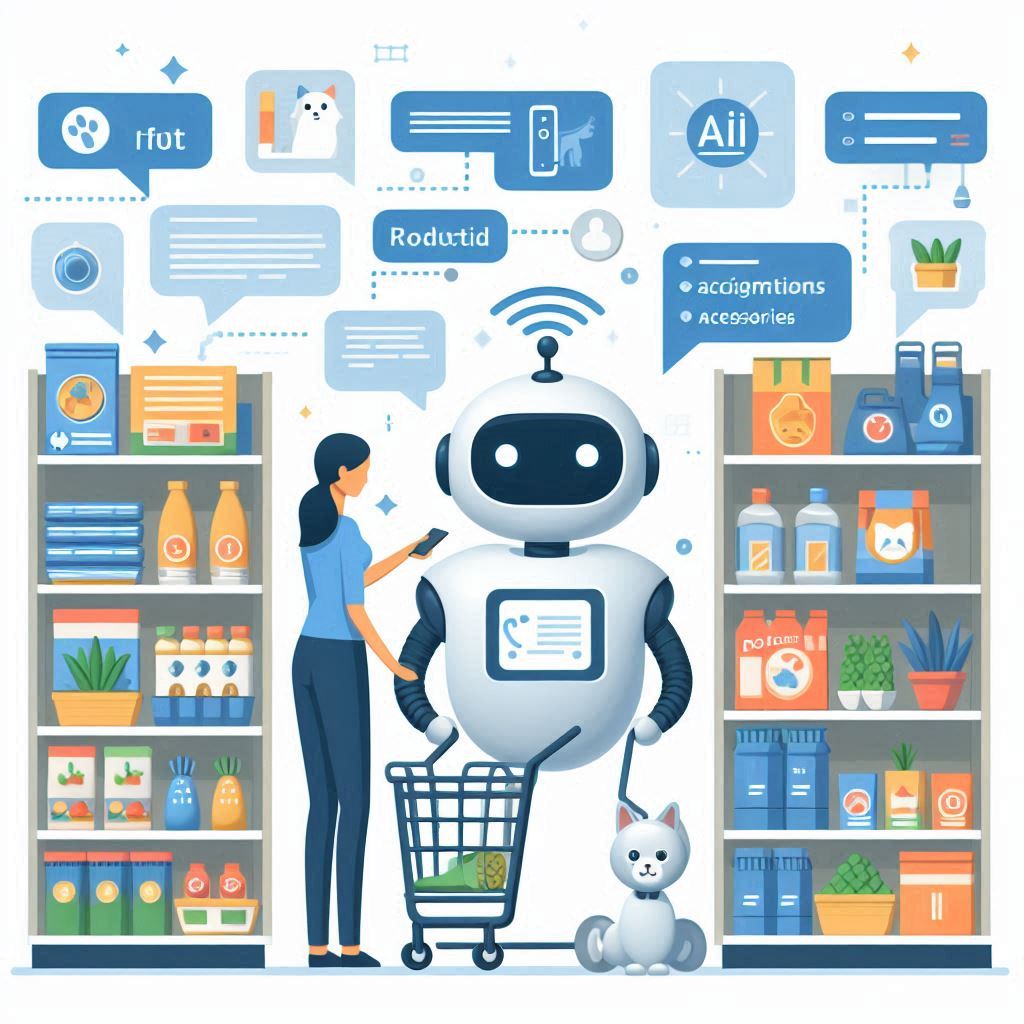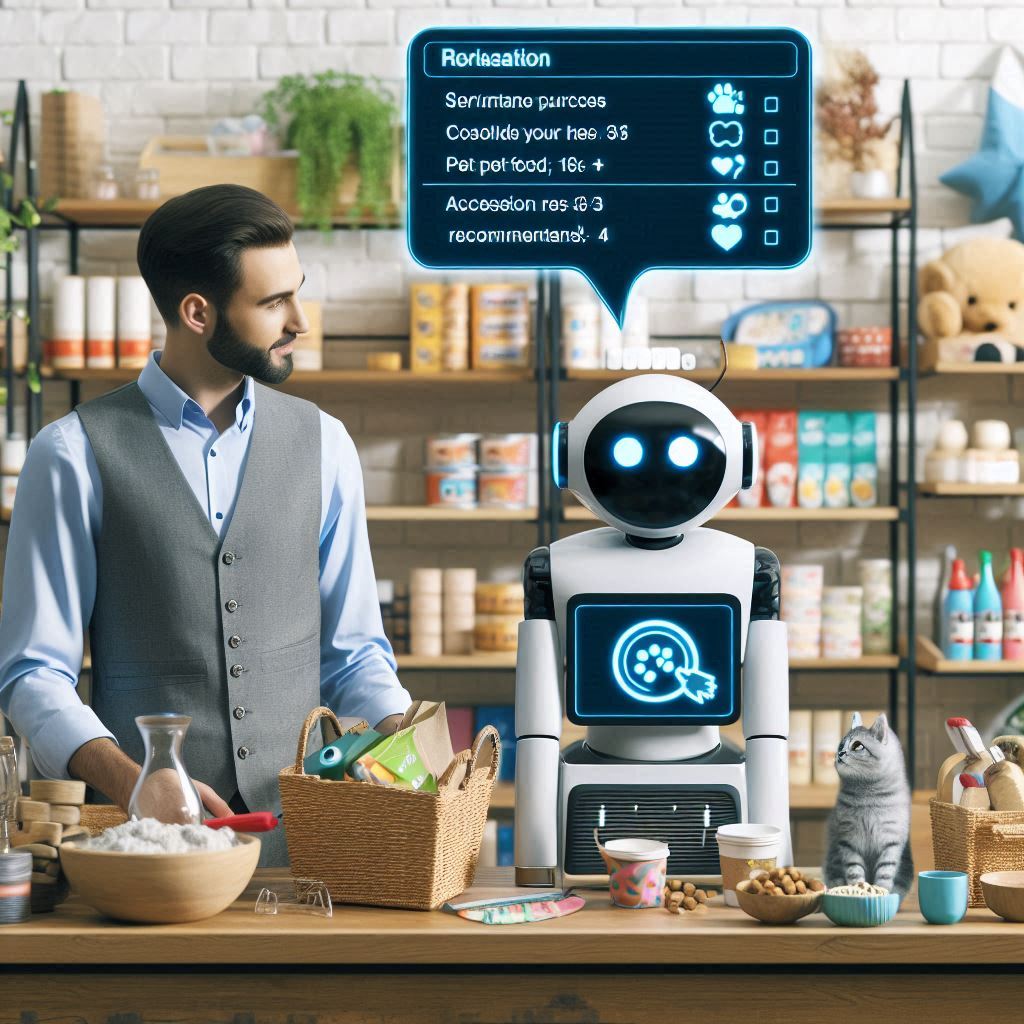My career has typically centered around retail. Starting with a gig as a fast-food worker in high school, I was hired as a cashier at a men’s clothing store during university. I later turned that experience into my first IT job as a junior analyst, working for a small software integrator focusing on point-of-sale systems for small retail businesses.
I later parlayed that into a career managing a team of programmers and analysts implementing and supporting high-volume point-of-sale and retail across dozens of locations. While I eventually moved away from point-of-sale, I still follow it and find the new transformation with Artificial Intelligence (AI) fascinating. With costs coming down for implementing AI in retail, now is the time where more adoption is happening.
Artificial Intelligence (AI) is no longer a futuristic luxury reserved for tech giants. Today, it’s transforming the retail landscape across the globe. From streamlining operations to enhancing customer experiences and slashing costs, AI has become an essential tool in modern retail strategy. In this article, we’ll explore how AI is helping retailers boost efficiency and reduce costs through smart automation—and how your business can tap into this evolution.
The Rise of AI in Retail
The adoption of AI in retail has surged in recent years. According to a report by Research and Markets, the AI in retail market is projected to reach $31 billion by 2028, growing at a compound annual growth rate (CAGR) of 34.4%. This growth is fueled by a blend of e-commerce expansion, increasing labor costs, and rising consumer expectations.
Retailers are leveraging AI to address supply chain disruptions, automate low-value tasks, and gather actionable insights from massive datasets. Whether you’re running a local boutique or a multinational retail chain, AI is redefining how retail business gets done.

How AI Enhances Operational Efficiency
AI significantly enhances operational efficiency in retail environments by streamlining critical processes such as inventory management, logistics, and customer service. Through intelligent demand forecasting, AI-powered systems can accurately predict inventory needs, reducing both overstock and stockouts while minimizing carrying costs. In logistics, machine learning algorithms optimize delivery routes, forecast supply chain disruptions, and automate warehouse operations—leading to faster fulfillment and reduced shipping expenses. Meanwhile, AI-driven customer service tools, like chatbots and virtual assistants, handle common inquiries around the clock, freeing up human agents for more complex issues and improving overall response times. I dabbled in AI-powered chatbots for the past two years. They are a fantastic first-contact point for custsomers. By integrating AI across these core areas, retailers can operate more efficiently, respond to customer needs in real time, and adapt quickly to market changes.
Inventory Management and Demand Forecasting
- AI algorithms analyze historical data, current trends, and external factors to predict demand with remarkable accuracy.
- This minimizes overstocking and understocking, reducing carrying costs and lost sales.
Smart Supply Chain Optimization
- AI enables real-time tracking and predictive analytics across the supply chain.
- Retailers can respond quickly to disruptions and optimize delivery routes to reduce fuel and labor costs.
Automated Checkout and In-Store Robotics
- Self-checkout systems and AI-driven POS tools reduce wait times and staffing needs.
- Some retailers deploy robots for shelf-scanning and restocking, ensuring accurate inventory levels.
Workforce Scheduling
- AI tools analyze foot traffic patterns and sales trends to create optimal staff schedules, reducing labor waste and improving customer service.
Reducing Costs with AI and Automation
AI doesn’t just make retail operations smarter—it makes them cheaper. One of the biggest costs for retail environments is inventory. Customers demand to have items available when they arrive, and retailers must balance the amount of inventory kept on-hand with the supply chain so that the inventory doesn’t age or spoil, while the customers have access to what they want.
AI helps retailers significantly reduce costs by automating routine tasks, optimizing resource allocation, and minimizing waste. In areas like labor, AI-powered tools such as smart scheduling systems and robotic process automation reduce the need for manual oversight, allowing businesses to operate with leaner teams. Inventory-related costs are cut through predictive analytics that prevent overstocking and reduce spoilage, particularly in sectors like grocery and fashion. AI also enhances loss prevention through video analytics that detect theft and anomalies in real time. Additionally, energy management systems powered by AI can adjust lighting, HVAC, and refrigeration based on store activity, resulting in lower utility bills. These combined efficiencies not only lower operational expenses but also improve long-term profitability.
Here are some ways AI reduces costs for retailers:
Labor Cost Reduction
- Automation tools take over repetitive tasks like inventory checks, data entry, and even customer inquiries via chatbots.
- This allows businesses to reallocate human employees to higher-value roles.
Reduced Shrinkage and Waste
- AI-powered video analytics help detect theft and fraudulent activity in real time.
- Machine learning algorithms predict spoilage and recommend stock rotations to minimize waste.
Energy and Utility Savings
- Smart AI systems can manage lighting, heating, and refrigeration based on store occupancy and time of day.
- Retailers save significantly on utility bills without compromising comfort.
Personalized Marketing = Higher ROI
- AI analyzes customer behavior to deliver personalized promotions that increase conversion rates without unnecessary ad spend.
Example: Amazon Go’s cashierless model has not only reduced labor costs but also enhanced data collection for personalized promotions and stocking strategies. I find shopping at an Amazon Go store fascinating. It is like the self-checkout line at a traditional grocery store but on steroids.
Enhancing Customer Experience through AI

In today’s hyper-competitive market, customer experience is everything. AI is reshaping how brands engage with shoppers before, during, and after the sale.
Chatbots and Virtual Assistants
- AI-powered chatbots provide 24/7 support, handling common questions and guiding shoppers through purchases.
Personalization Engines
- Algorithms recommend products based on browsing history, purchase behavior, and demographic data.
- This increases average order value and customer satisfaction.
Sentiment Analysis and Feedback Loops
- AI tools analyze reviews, surveys, and social media to gauge customer sentiment.
- Retailers can act quickly on negative feedback and improve service delivery.
Example: Sephora uses AI for virtual try-ons and personalized recommendations, creating a seamless, tech-enabled beauty shopping experience.
Real-World Examples of AI in Retail
Many leading retailers are already leveraging AI to great effect:
- Amazon – Uses AI for personalized shopping, dynamic pricing, and its cashierless Go stores.
- Walmart – Deploys AI for inventory management, route optimization, and employee scheduling.
- Zara (Inditex) – Implements AI in demand forecasting and fast fashion design cycles.
- Target – Uses AI to optimize supply chain and manage store inventory.
- Alibaba – Offers AI-driven product recommendations and facial recognition checkout.
These case studies highlight how AI isn’t just a buzzword but a proven strategy for gaining competitive edge.
Tools and Technologies Powering Smart Retail Automation
Several advanced technologies are driving AI adoption in retail:
- Machine Learning: Powers forecasting, personalization, and dynamic pricing.
- Computer Vision: Enables image recognition for checkout, loss prevention, and shelf management.
- Natural Language Processing (NLP): Used in chatbots and voice-activated shopping tools.
- Retail-Specific Platforms:
- Google Cloud Retail AI – Advanced product search and recommendations
- IBM Watson – Analytics and trend prediction
- Salesforce Commerce Cloud – Unified customer experience
- Amazon Forecast – Demand planning and operational forecasts
Retailers can start small by integrating one or two tools, then expand based on ROI.
Challenges and Considerations Before Implementing AI
While AI offers major benefits, retailers must also consider potential obstacles:
- Data Privacy: Ensure AI tools comply with data protection regulations like GDPR and CCPA.
- Cost of Implementation: Some tools require upfront investment. Start with a pilot program to test ROI.
- Integration Complexity: AI must work with existing systems like POS, ERP, and CRM.
- Employee Training: Upskill your team to understand and manage AI tools effectively.
Avoiding these pitfalls is key to a successful digital transformation.
The Future of AI in Retail
AI will continue to push boundaries in the retail space, with trends like:
- Predictive Commerce: Anticipating needs and delivering before customers even ask.
- Hyper-Personalization: Real-time, AI-driven interactions tailored to individual customers.
- Immersive Shopping: Augmented reality (AR) and virtual try-ons driven by AI.
- Unified Commerce: Seamless integration of physical and digital retail channels.
Forward-thinking retailers are already investing in these technologies to stay ahead.
Conclusion
AI is transforming every facet of the retail experience—from the stockroom to the checkout line. By embracing smart automation, retailers can cut costs, increase efficiency, and create unforgettable customer experiences.
The best part? You don’t need to be Amazon to get started. Whether you run a single store or a national chain, there are scalable AI tools that can deliver real ROI.
Call to Action
Ready to future-proof your retail business?
✉️ Download our free Retail AI Toolkit for a step-by-step guide to identifying opportunities, choosing tools, and implementing smart automation.
And don’t forget to share this article with your team or on LinkedIn to spark the conversation about the future of retail.
Stay ahead. Stay smart. Go AI.